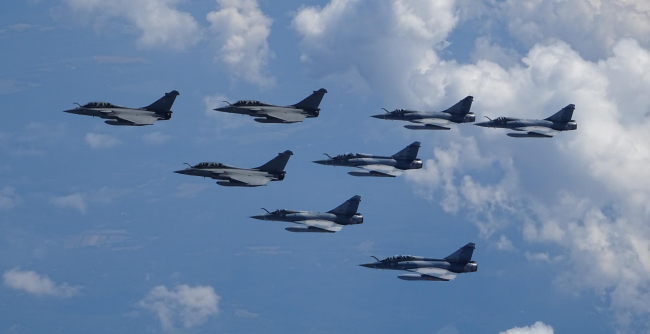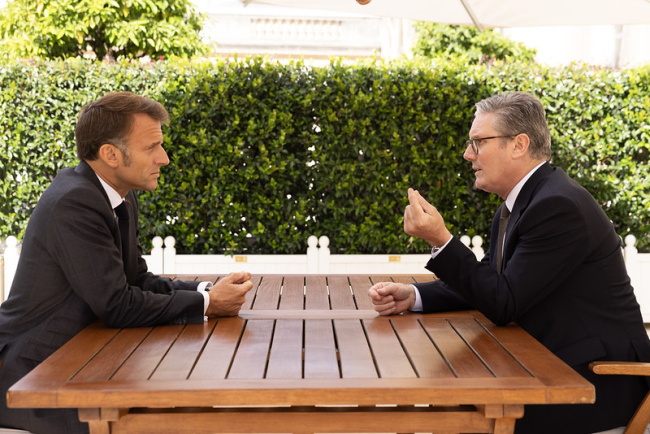TB2 Bayraktar: Big Strategy for a Little Drone

Since 2016, the tactical drone TB2 Bayraktar—“standard bearer” in Turkish—has received considerable media attention, particularly during the conflict in Nagorno-Karabakh in 2020. Thanks to Azerbaijan’s victory over its neighbor Armenia, the drone, manufactured by Baykar, is now a proven combat system with increasing numbers of export clients.

These sales are encouraged by the Turkish government, which is anxious to promote the products of its defense industrial base (DIB). The TB2 enjoys a reputation as an efficient and inexpensive platform and serves as a springboard for the Turkish defense aeronautics industry, which continues to make new announcements about future drone projects.
The Turkish drone has also played an important role in the conflict in Ukraine, where the Ukrainian forces have used it for strategic communications, further strengthening its reputation. Presented as a key factor in several Ukrainian military successes, including the halting of the Russian advance from Belorussia or the destruction of the Moskva cruiser, the TB2 has become one of the symbols of the early stages of the conflict, partly thanks to its distinctive shape. Baykar has also exploited the positive publicity around its flagship product to intensify its own marketing and spotlight its industrial accomplishments.
Beyond this media success story, which the Turkish government has capitalized on to promote its own achievements, it would be useful to put the TB2’s technical performance into perspective in terms of its endurance, capacity, and range. Examination of its military and commercial history enables a more impartial view of this weapons system and its integration into Ankara’s industrial trajectory and strategic plans.

Available in:
Regions and themes
ISBN / ISSN
Share
Download the full analysis
This page contains only a summary of our work. If you would like to have access to all the information from our research on the subject, you can download the full version in PDF format.
TB2 Bayraktar: Big Strategy for a Little Drone
Related centers and programs
Discover our other research centers and programsFind out more
Discover all our analysesSaudi Arabia’s Nuclear Temptations. Lessons Learned from Regional Instability
Saudi Arabia’s integration in the international arena and regional stability, notably through reducing its dependence on fossil energies, are crucial elements for the success of the Kingdom’s Vision 2030, the Crown Prince’s top priority. However, Mohammed bin Salman’s declarations in 2018 and 2021, indicating that “if Iran develops a nuclear bomb, we will follow suit as soon as possible”, combined with the recent strikes on key Iranian nuclear facilities, do not bode well for the future of the Kingdom, the region and the non-proliferation regime at large.
The Future of Air Superiority. Command of the Air in High Intensity Warfare
Air superiority, understood as control of the air, is a cornerstone of the Western art of warfare. It is a decisive condition, albeit not sufficient by itself, to achieve military victory, as it enables the concentration of air power toward the achievement of wider strategic objectives and protects other components from unbearable attrition levels. It is best achieved through the offensive use of air power in a joint effort to neutralize the enemy’s air power.
Europe Uncovered?
As Russia continues to threaten Europe, the Trump administration is making no secret of its desire to withdraw—at least partially—from the defense of the Old
Continent in order to focus on strategic competition with China. It is thus putting pressure on its European allies to increase their investment in the military sector. The NATO Summit in The Hague in June 2025 resulted in ambitious commitments by member states to increase their defense spending.
How should Britain and France cooperate to realise the Northwood Declaration?
During his state visit to the United Kingdom (UK) last week, Emmanuel Macron, President of France, signed a joint declaration with Sir Keir Starmer, Prime Minister, on nuclear cooperation between Britain and France. The Northwood Declaration highlights that while both countries’ nuclear arsenals remain sovereign, cooperation on nuclear deterrence can ‘contribute significantly’ to the security of the North Atlantic Treaty Organisation (NATO) and the Euro-Atlantic region.













